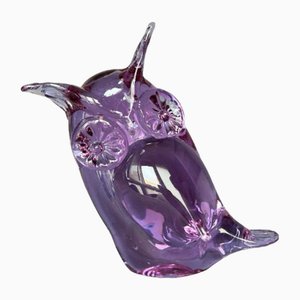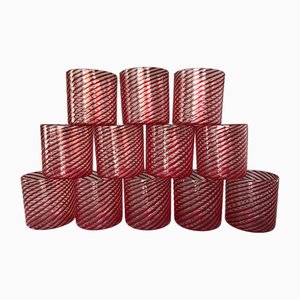John bainbridge copnall.
Sussex 1928 - london 2007.
He lived in benalmadena, málaga for a period of 14 years, until 1968, which he left to england.
Original painting on board, mixed technique with total measurements of 100 x 75 cm.
Signed, dated and titled on the reverse: john copnall 1965, mountainside.
British abstract expressionism.
Enough, awards and international exhibitions.
John brainbrigde copnall (slinfold, sussex, 1928 - london, 2007).
“Montainside”, 1965
mixed technique on board.
Signed, dated and titled on the back.
Measurements: 100 x 74 cm.
John copnall was born in slinfold, the son of the eminent sculptor edward bainbridge copnall (1903-1970), while his mother muriel was a keen amateur artist and his uncles, frank and teresa copnall, were professional artists of some repute. Copnall showed an early interest in drawing and, at the age of eighteen, began studying at the architectural association in london. Although he abandoned that career. Initially, copnall began his painting studies under the tutelage of his father at the sir john cass school of art in the city of london and from 1949 under the direction of the artist sir henry rushbury at the school of the royal academy. His first works were figurative aesthetics, achieving the turner gold medal for landscape painting. In 1954, copnall and his friend bert flugelman visited spain for what he intended to be a short visit, but he fell in love with the iberian landscape and stayed for fourteen years. At first he lived in ibiza and later moved to the mountains of malaga, where he earned his living as a painter, sometimes using the name juan de retamá. The intense light of spain and the visceral nature of its people fundamentally changed his art, as he experimented with intense earth colors while moving increasingly toward abstraction. Throughout his career, copnall was interested in the use of intense colors and spanish light, which undoubtedly enhanced his artistic senses. As the 1960s progressed, copnall's painting became fashionable and he began selling his paintings to private collectors, including melvyn douglas. He had several solo exhibitions in spain and catalonia, as well as shows in germany, where he was also popular. In 1968, copnall returned to england and the following year had a solo exhibition at the bear lane gallery in oxford. His work was clearly influenced by that of american abstract expressionists such as barnett newman, morris louis and mark rothko with copnall using acrylic paint on increasingly larger canvases. In 1970 he won the ea abbey scholarship and further recognition followed with art council awards in 1973 and a british council award in 1979.
JOHN BAINBRIDGE COPNALL .
SUSSEX 1928 - LONDRES 2007 .
VIVIÓ EN BENALMADENA , MÁLAGA POR UN PERIODO DE 14 AÑOS , HASTA 1968 QUE MARCHÓ A INGLATERRA .
PINTURA ORIGINAL SOBRE TABLA , TECNICA MIXTA CON MEDIDAS TOTALES DE 100 X 75 CM.
FIRMADA , FECHADA Y TITULADA AL REVERSO : JOHN COPNALL 1965 , MOUNTAINSIDE .
EXPRESIONISMO ABSTRACTO BRITÁNICO .
BASTANTES , PREMIOS Y EXPOSICIONES INTERNACIONALES .
JOHN BRAINBRIGDE COPNALL (Slinfold, Sussex, 1928 - Londres, 2007).
“Montainside”, 1965
Técnica mixta sobre tabla.
Firmado, fechado y titulado al dorso.
Medidas: 100 x 74 cm.
John Copnall nació en Slinfold, hijo del eminente escultor Edward Bainbridge Copnall (1903-1970), mientras que su madre Muriel era una entusiasta artista aficionada y sus tíos, Frank y Teresa Copnall, eran artistas profesionales de cierta reputación. Copnall mostró un interés temprano por el dibujo y, a la edad de dieciocho años, comenzó a estudiar en la Architectural Association de Londres. Aunque abandonó dicha carrera. Inicialmente, Copnall comenzó sus estudios de pintura bajo la tutela de su padre en la Escuela de Arte Sir John Cass en la ciudad de Londres y desde 1949 bajo la dirección del artista Sir Henry Rushbury en la Escuela de la Royal Academy. Sus primeros trabajos fueron de estética figurativa, alcanzando la Medalla de Oro Turner de Pintura de Paisaje. En 1954, Copnall y su amigo Bert Flugelman visitaron España para lo que pretendía ser una visita corta, pero se enamoró del paisaje ibérico y se quedó durante catorce años. En un primer momento vivió en Ibiza y posteriormente se trasladó a las montañas de Málaga, donde se ganaba la vida como pintor, a veces usando el nombre de Juan de Retamá. La intensa luz de España y la naturaleza visceral de su gente cambiaron fundamentalmente su arte, ya que experimentó con intensos colores tierra mientras avanzaba cada vez más hacia la abstracción. A lo largo de su carrera, Copnall se interesó por el uso de colores intensos y la luz española que indudablemente potenció sus sentidos artísticos. A medida que avanzaba la década de 1960, la pintura de Copnall se puso de moda y comenzó a vender sus pinturas a coleccionistas privados, incluido Melvyn Douglas. Tuvo varias exposiciones individuales en España y Cataluña, así como muestras en Alemania, donde también fue popular. En 1968, Copnall regresó a Inglaterra y al año siguiente realizó una exposición individual en la Bear Lane Gallery de Oxford. Su trabajo estuvo claramente influenciado por el de expresionistas abstractos estadounidenses como Barnett Newman, Morris Louis y Mark Rothko con Copnall utilizando pintura acrílica en lienzos cada vez más grandes. En 1970 ganó la beca EA Abbey y le siguió un mayor reconocimiento con los premios del Art Council en 1973 y un premio del British Council en 1979.




















Contacta con nosotros
Haz una oferta
¡Hemos notado que eres nuevo en Pamono!
Por favor, acepta los Términos y condiciones y nuestra Política de privacidad
Contacta con nosotros
Haz una oferta
¡Ya casi está!
Para seguir la conversación en la plataforma, por favor completa el registro. Para proceder con tu oferta en la plataforma, por favor completa el registro.Exitoso
Gracias por tu consulta, alguien de nuestro equipo se pondrá en contacto contigo en breve.
Si eres profesional del diseño, por favor solicita aquí los beneficios del Programa comercial de Pamono